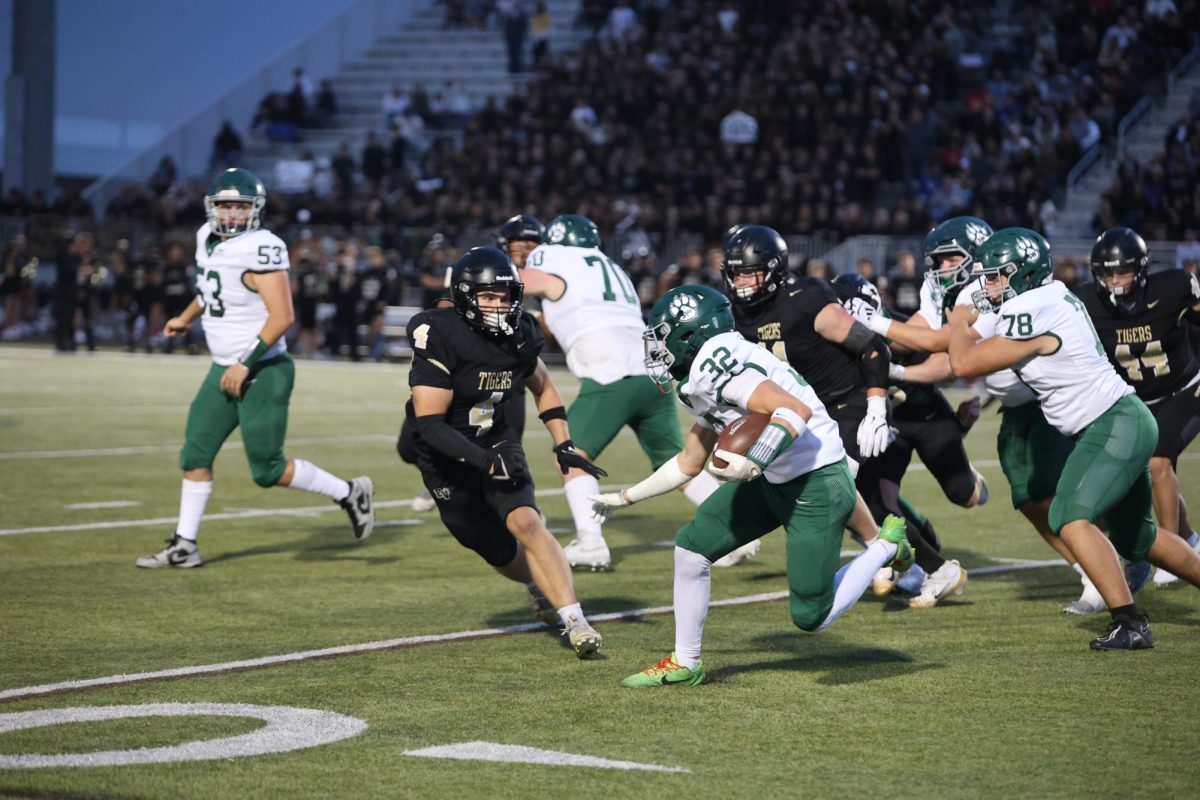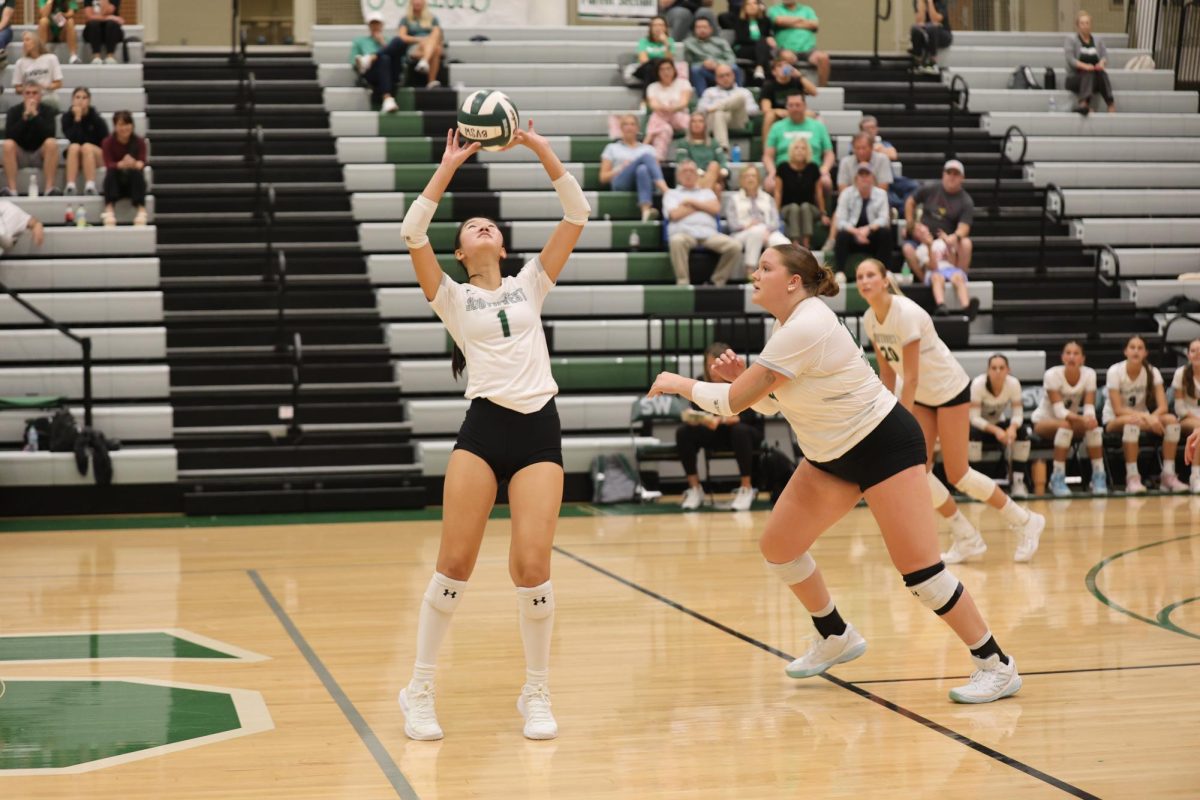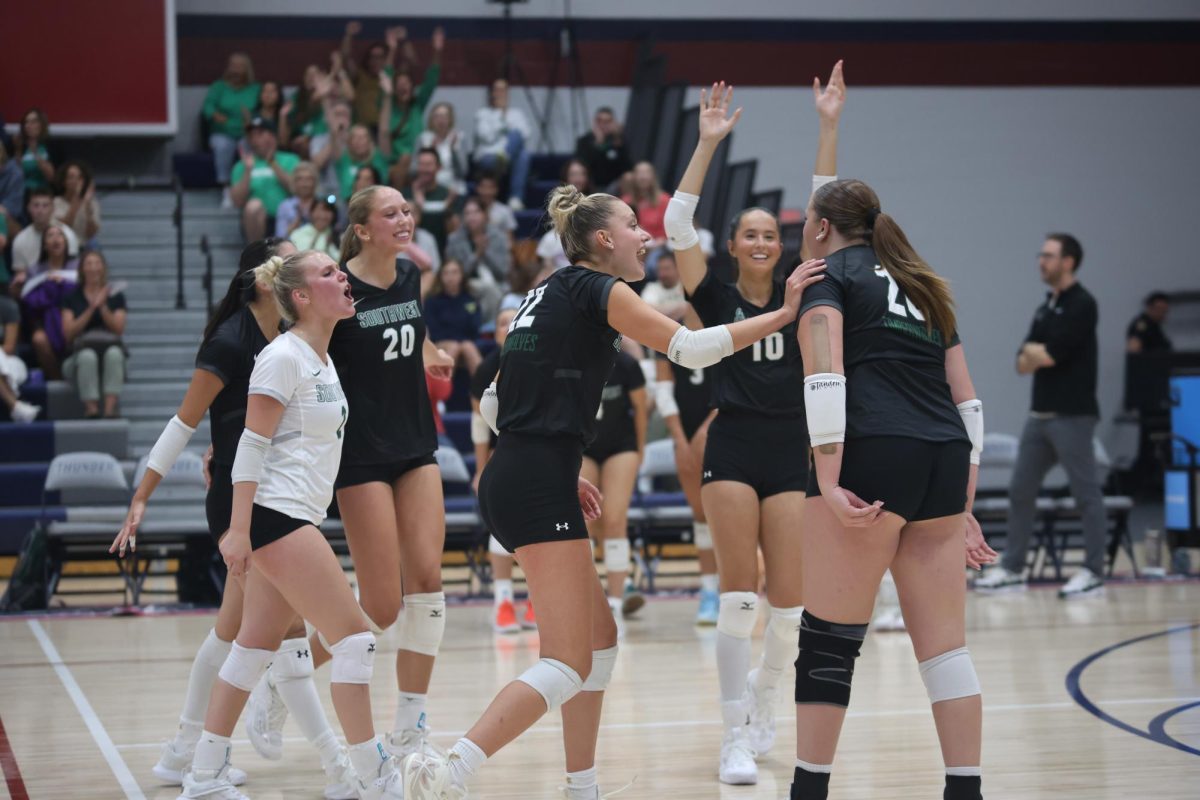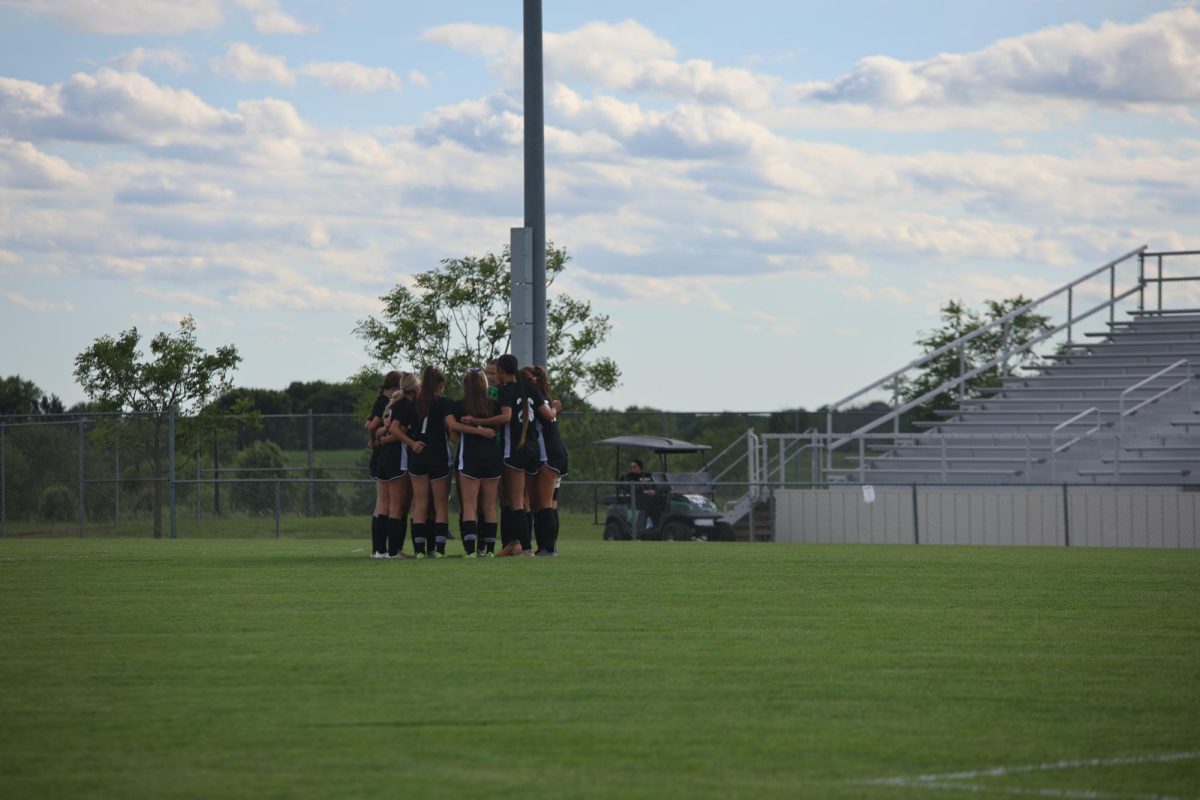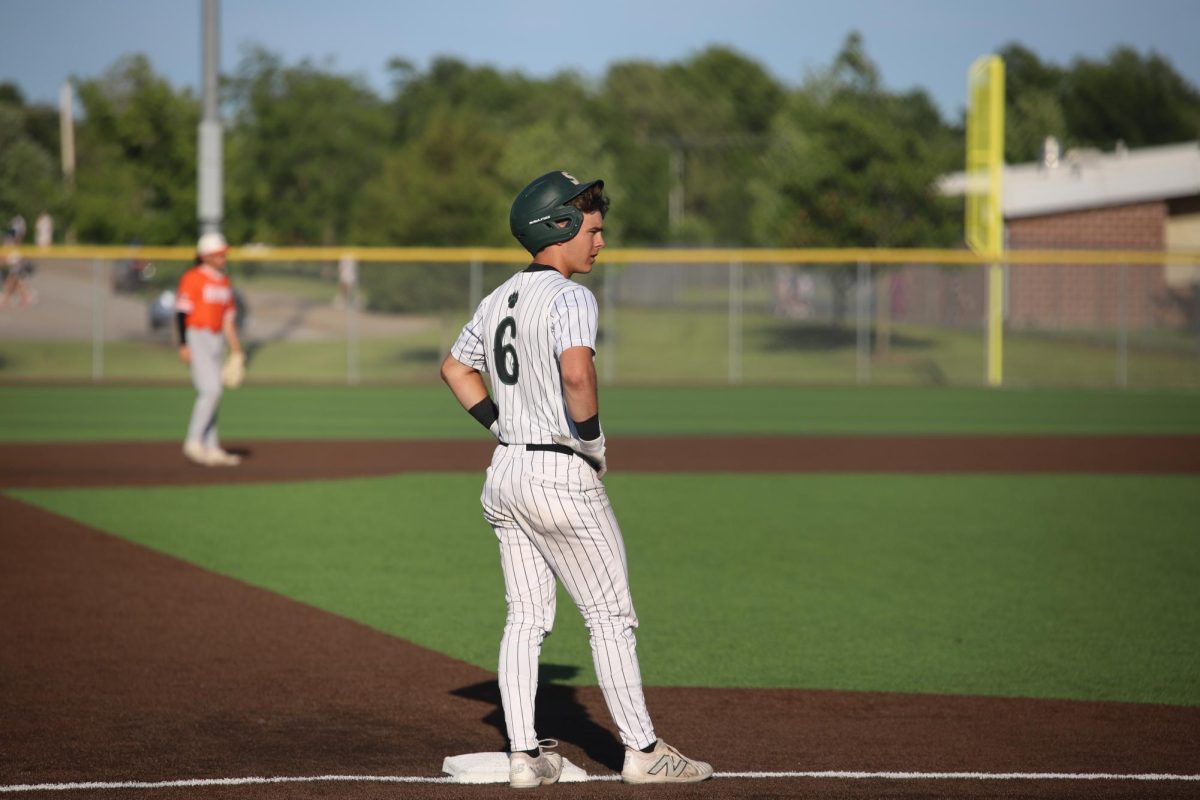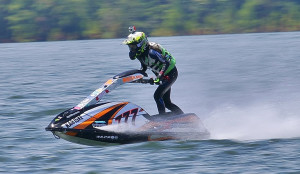Alayer of sweat covers his skin, dripping off his fore- head and stinging his eyes, sliding down his back and soaking his clothes. The sun bakes his skin as he tries to concentrate on the next play, the next goal, the next serve.
The Kansas sun has had it out for athletes this summer, and the blistering fall heat won’t be letting up soon. While each outdoor athlete is battling the sun regardless of the sport, the sun is affecting each player in a different way — making the fight for the big ‘W’ a challenge. Each sport has taken its own precautions as a caution- ary measure to the heat.
As football players march from the locker rooms down to the fields, it’s the football pads that affects gameplay. Athletic trainer Krista Westerkamp recommends light- ening up on the amount of protective gear in such high temperatures since the padding that a football player wears traps heat against the body.
Another helpful tip is to wear light shirts or compres- sion shirts. However padded shirts are also available and those offer extra protection. Under Armour sells these shirts which offer padding around the sternum, rib area, underarm area and shoulders. These shirts are made from the same HeatGear material that compression and perfor- mance shirts are made from. Other companies that offer padded undershirts include Champro, Nike, Schutt and McDavid.
The football coaches also have methods in mind to pre- vent a player from becoming dehydrated or experiencing a heat-related illness. Throughout the summer, the football players worked out 7 a.m. until 9:30 a.m. Monday – Thursday. These two and a half hour practices helped ensure the team avoided the hot hours of the day. “We’re fortunate enough we’ve avoided most of the heat in the mornings,” senior Gus Purdum said.
Head coach Bill Lowe will adjust the practice time and allow for more water breaks when necessary. He has high hopes for his team this year.“This is the first year we’ve had a full senior class for three years,” he said. “They take ownership for our school.”
Aside from football players, runners also face many concerns when it comes to the hot weather. As a result they had summer practices in the mornings at 6:30 a.m.“Well waking up at six in the summer isn’t fun,” junior Megan Edwards said. “But it’s better than working out in the middle of 110 degree weather.”
Since practices for the cross country team were at such an early hour, runners have been able to avoid the heat. However, practices will have to be held immediately after school once fall starts. This means water will be detrimental.“As coaches we have to have the ability to provide water at all times,” assistant cross country coach Aaron Ballew said. “It leads to dehydration so quickly, so we have to keep avoiding that as a main focus.”
Safety is the number one concern to the cross country coaches. “We don’t want to kill anyone … on purpose,” Ballew said.
The tennis courts are another area of concern because according to isporttennis.com, tennis courts can range anywhere from 10 to 20 degrees hotter than the actual, off- court temperature. Humidity, clarity, court reflection and court color are all factors affecting the on-court tempera- ture. Team members try to wear sweat bands in an effort to remain cool since the body loses so much sweat. This is especially true when singles matches can last up to an hour and a half or tournaments that last all day.
Overall, each outdoor sport has a different obstacle they have to deal with regarding the hot Autumn weather and each has to take the proper precautions to ensure remain- ing healthy. There are symptoms coaches and teammates can look out for. Watch out for people who appear fatigued, claim dizziness, seem lethargic, or are very red in the face. “Ultimately, athletes, players and parents all work as a team,” Westerkamp said. “They should be able to tell if something is abnormal.”


